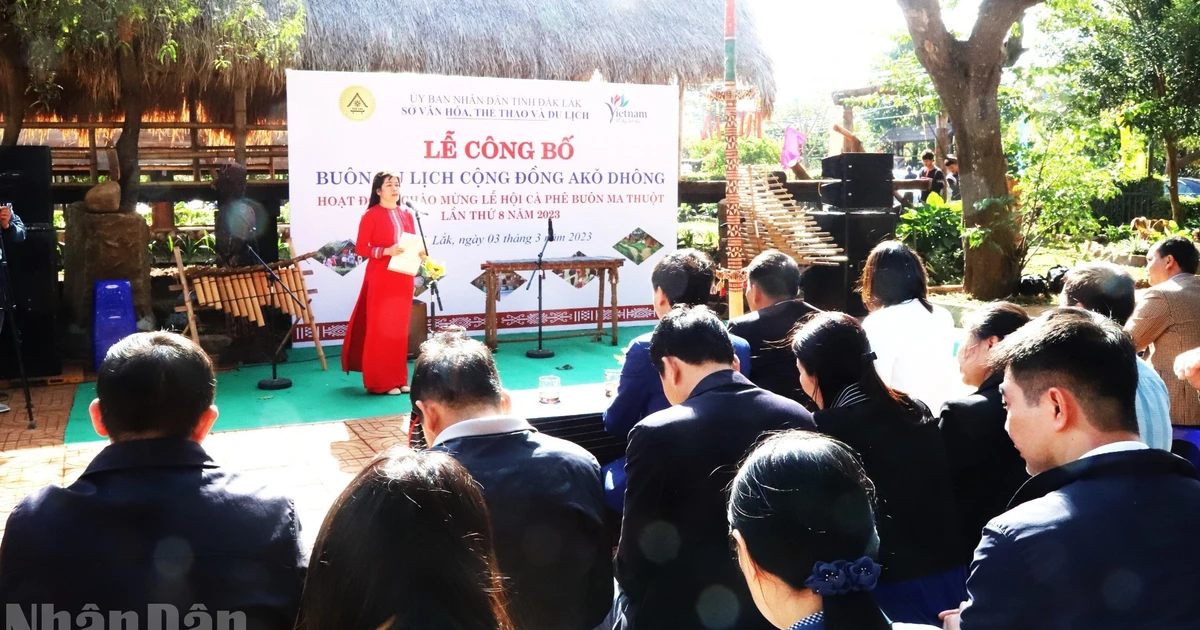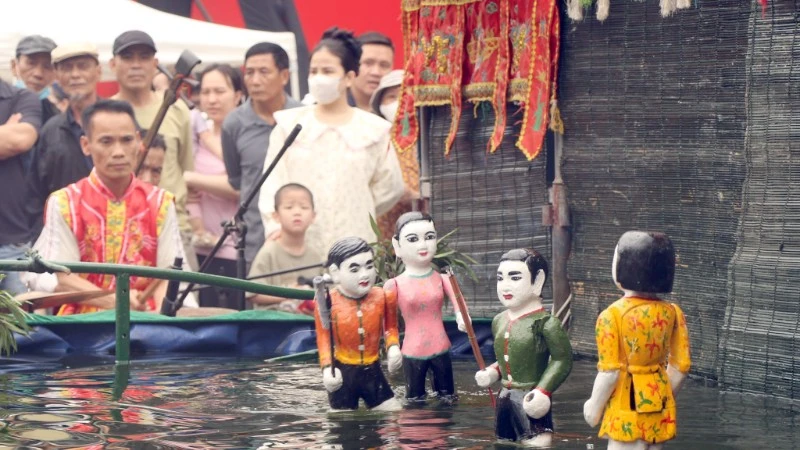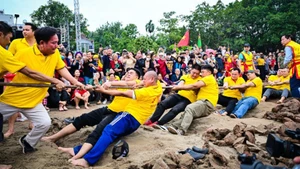Traders and tourists to Na Meo Market often stay at nearby homestays close to the Na Meo International Border Gate, making it convenient to visit the market in the early morning. Two special breakfast dishes of this region, Lao pho and fragrant Lao sticky rice, are worth trying.
The market's location is only about 300 metres from the Vietnam-Laos border marker, making it a popular spot for visitors to take memorable photos with the national sovereignty marker, against the backdrop of the majestic mountainous landscape.
The market's lively atmosphere is shared by residents from the border regions of Quan Son District (Thanh Hoa Province) and Viengxay District (Houaphanh Province, Laos). Many Laotians can speak enough Vietnamese for basic communication, and vice versa. Tourists who do not know the language need not worry, as there are always people willing to translate.
Na Meo Market originated in the late 1980s within a small community of Thai ethnic minority people in western Thanh Hoa. Over time, the market has grown in scale, with an increasing number of people coming to trade, offering a variety of goods, and receiving attention from local authorities, who have organised and developed it systematically. Despite these developments, the market retains the unique characteristics of a border market, featuring vibrant traditional textiles and home-grown agricultural products. A closer look reveals that Laotians typically sell vegetables, rice, meat, stream fish, and wild bamboo shoots, while the Vietnamese sell household goods, shoes, cosmetics, and dried fish. Sometimes, they even exchange goods without using cash. The market does not trade in wild birds or rare wildlife, thanks to regular inspections and educational efforts by authorities on both sides.
Na Meo Market is not only a place for buying, selling, and exchanging goods, but also a venue for meeting, socialising, and showcasing the friendship and solidarity between the people of Vietnam and Laos. It attracts tourists who want to experience the beauty of the highland border region. When visiting Quan Son District, alongside exploring Bo Cung Cave, bathing in Xia Stream, and engaging in community-based tourism in Ngam Village, the Na Meo market is an excellent destination to experience and bring home unique gifts from the mountains and forests.
















